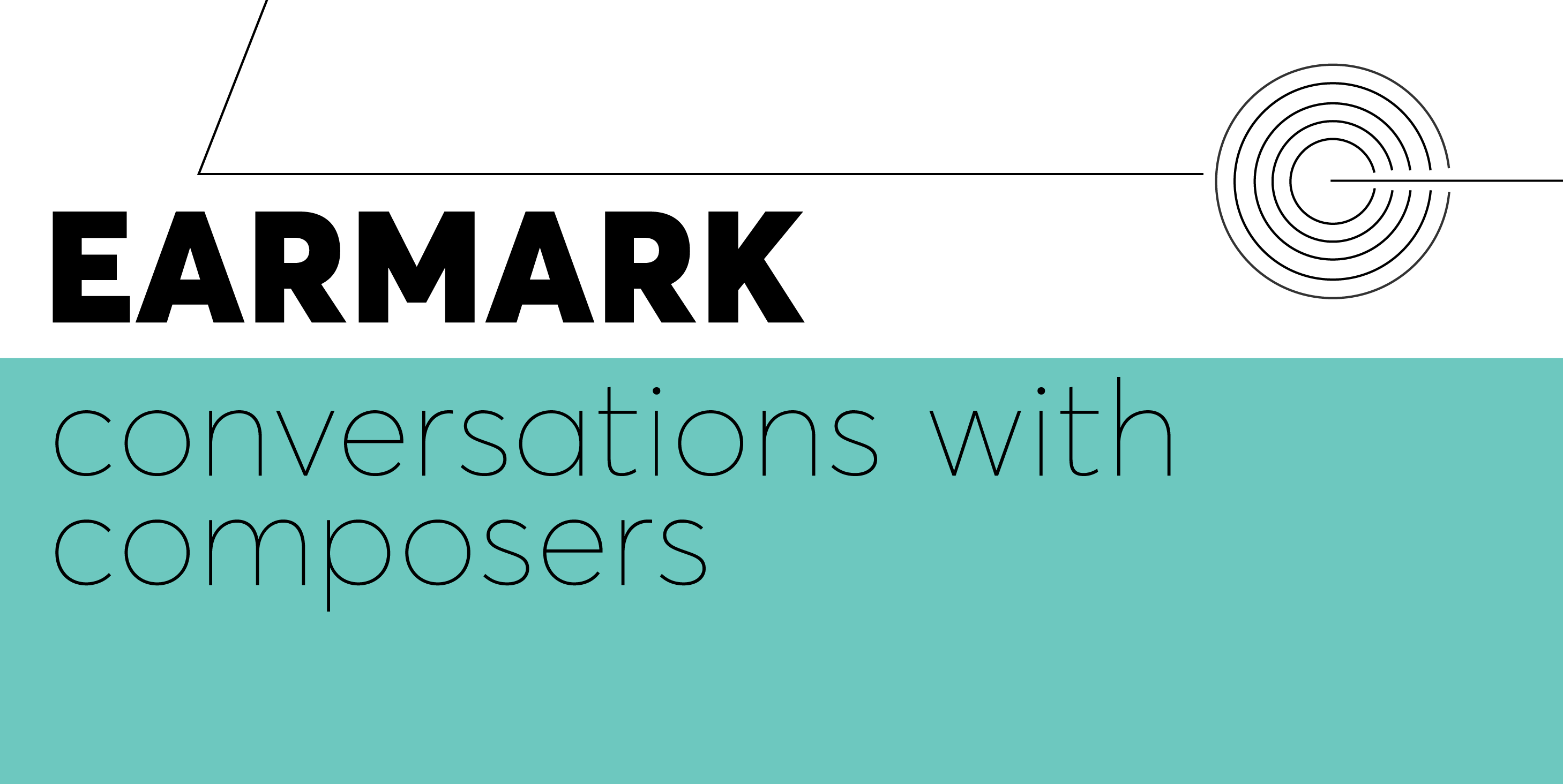By Matthew Fava
In this edition of Earmark we interview Associate Composer Stephanie Orlando. I could describe her as fiercely Ontarian in terms of her habitation: born in Hamilton, undergraduate studies in Waterloo, and graduate studies in Toronto. Sonically, she is a traveler, writing bucolic passages for recorder ensemble in one context and otherworldly contrasts of texture for bizarro chamber ensembles in another.
During our exchange, I was reminded of that sense I had growing up that I should try and find the people whose ears were interested in the same sounds as mine. Stephanie shares some of the moments that propelled her as a musician and composer, following her ears along the way.
CMC: What got you excited about music at a young age?
Stephanie Orlando: As a child, my parents put me in piano lessons. I didn’t feel strongly about it either way, at the time it was just another thing I had to do like homework or chores. However when I was around 11 years old, my school teacher played guitar and would frequently play pop songs for the class and we would sing along. All of a sudden music became a cool thing to do and I decided to embrace it. It was then that I developed a more personal connection with playing music. I spent a lot of time learning songs I liked (mostly pop), and eventually this newfound love also translated into the music I was required to learn as well (mostly classical). I think it was a couple years after having this experience with my teacher that I decided I wanted to pursue music as a career. I had seen the effect it had on me and my classmates and I liked the connection it created between all of us.
CMC: What was the most important music concert/event you attended?
SO: When I was in my first year of university, some friends and I went out to The Jazz Room in Waterloo one night. It was experimental music night, and headlining was bass clarinetist Lori Freedman playing free improvisation. I had no idea what to expect, but what I heard absolutely blew my mind—it was the most disjunct, dissonant, non-tonally centred music I’d ever been exposed to. Growing up taking classical piano lessons had never led me to this sort of contemporary music, but I wanted to know more. Although my high opinion was less than favourable with my group of friends, Lori’s performance is what eventually led to my interest in new music, and soon after I began composing music myself.
CMC: What is on your personal playlist?
SO: I like to listen to a little bit of everything. Some of the contemporary composers I regularly listen to are Kaija Saariaho, Anna Thorvaldsdottir, Meredith Monk, Donnacha Dennehy, Steve Reich, and Helmut Lachemann. However I do listen to a lot of pop music as well. Some of my favourites are Lana del Rey, Kendrick Lamar, The White Stripes, Nirvana, Depeche Mode, Led Zeppelin, The Beatles, and many more!
CMC: How do you define your musical/artistic community?
SO: My first thought would be geographically, within the city of Toronto. However with current technology I’m involved in all sorts of musical circles that reach across the country. My own personal community is based on some sort of shared aspiration of creating and discovering new sounds and ideas. This artistic community is made up of composers, performers, artists from other backgrounds, and those people who support new music and want to see it thrive. The community is alive and well, and you can see it in the audience at concerts, or among those that gather for a drink exchanging ideas afterwards.
CMC: Tell me about a project/work of yours that you are particularly proud of.
SO: My work Resonance for piano trio would definitely be one that I’m particularly proud of. I composed it during a time when I was really burnt out from working on my Master’s thesis, so this was supposed to be a “fun” piece. I wanted to write something that made me remember why I loved composing so much in the first place. Initially when I was thinking about the piece, I decided to start with music that I liked. Resonance has some influences in minimalism, as well as rock music. It brings together these different types of music, while experimenting with extended techniques to achieve unique timbres and textures. I was really happy with how it turned out, and it was performed by Thin Edge New Music Collective this past summer at the Waterloo Region Contemporary Music Sessions.

